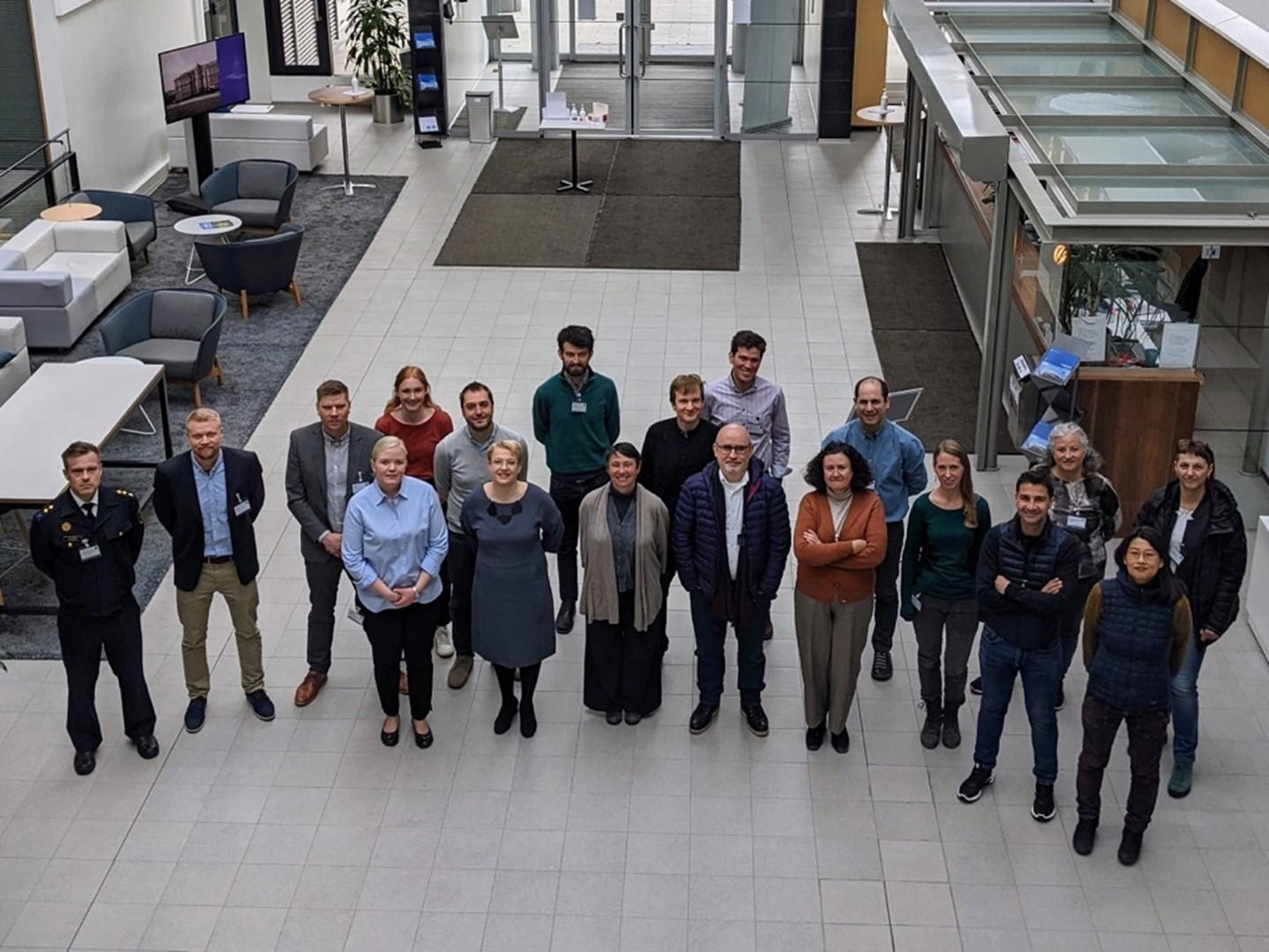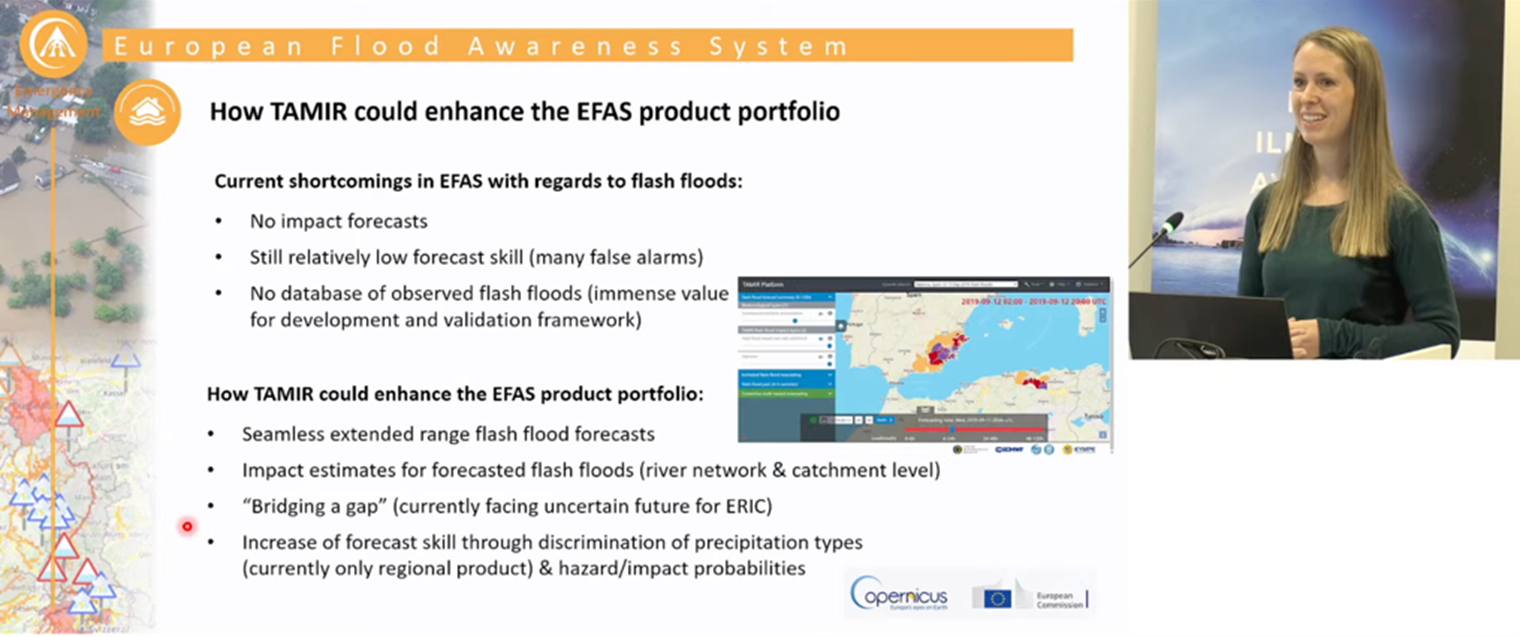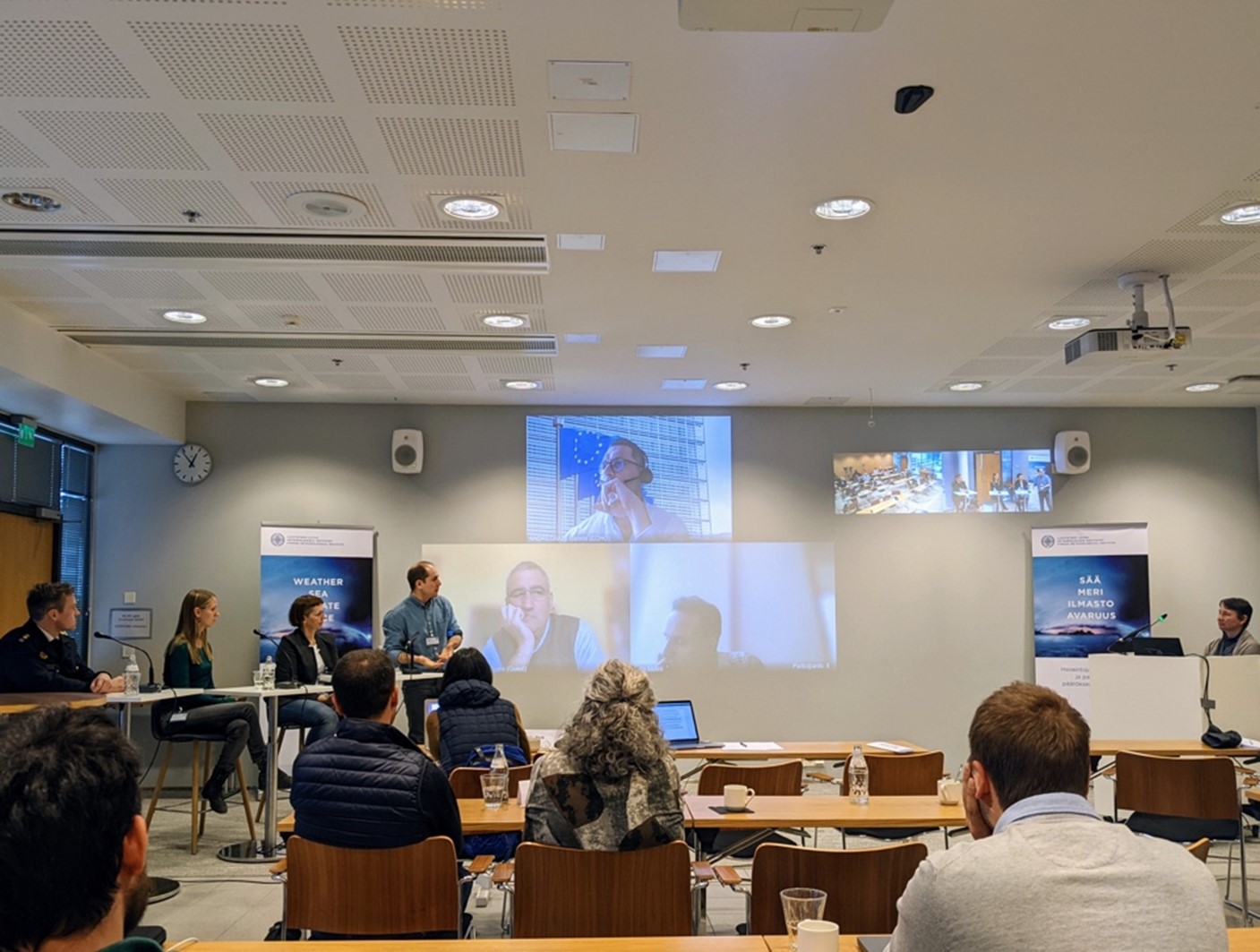
by Eleanor Hansford, ECMWF
The final workshop of the TAMIR project took place on the 04 and 05 May 2022. The hybrid meeting attracted 85 registrations in total, with 12 participants gathering in Helsinki and the remainder joining virtually . Funded by the European Commission’s Civil Protection Mechanism, the project aims to enhance emergency response capacity by developing rapid risk assessment products to provide improved impact forecasting.
Hosted by the Finnish Meteorological Institute (FMI), the workshop was the last stage of the ‘co-design’ process. A key part of the TAMIR project, this process has enabled the project team to incorporate the needs and opinions of end-users throughout the project lifecycle. The workshop began with a series of presentations demonstrating the various stages of scientific work required to create the final products shown on the platform. This included presentations from Calum Baugh, Corentin Carton De Wiart, and Eleanor Hansford of ECMWF, along with colleagues from the Polytechnic University of Catalonia (UPC) and FMI also presenting their work. The design journey of the TAMIR products was presented by Christel Prudhomme of ECMWF, who gave valuable insights into how the iterative design process was driven by feedback from end-users.
Participants spent the remainder of the first day examining the extent to which TAMIR products would have aided impact forecasting using case studies of flash flood events across Europe. Each event was introduced by an ‘event champion’, with Luca Molini (CIMA Foundation), Rosa Torres Saavedra (National Civil Protection in Valencia), Petri Tiainen (Kymenlaakso rescue, KYMPE) and Michaela Mikuličková (Slovak Hydrometeorological Institute, SHMU) giving excellent introductions to their respective flooding events. After being given some time to explore the products, feedback was collected on both an online rating platform and through open-ended questions put to both the physical and virtual attendees.

Summaries of the findings from these case study sessions were presented on the morning of the 05 May by several members of the TAMIR consortium. From these findings, it was clear there were recurrent themes to the feedback. Most importantly, the TAMIR products were found to have high complementarity to the existing products used by participants when forecasting flash floods and their impacts. Also apparent was the significant benefit end-users would gain from having more comprehensive training materials and documentation. Longer term, many participants also felt it would be very advantageous to have help in integrating the TAMIR products into their existing workflows. Looking to the future, the TAMIR consortium are seeking to implement this feedback to ensure as wider and complete uptake of the products as possible, and in turn ensure all those involved with civil protection have the best flash flood impact forecasting tools possible.
Following these summaries, Xavior Llort of Hydrometeorological Innovative Solutions (HYDS) gave a presentation on the integration of TAMIR products into legacy platforms. Afterwards, an engaging talk on the future of TAMIR products in EFAS was given by Vera Thiemig of the Joint Research Centre (JRC). Particularly interesting was her explanation of how they will enhance the current EFAS product portfolio and improve some of the shortcomings of EFAS regarding forecasting flash flood impacts.
The workshop finished with a thought-provoking panel discussion chaired by Christel Prudhomme. On the panel were Vera Thiemig (JRC), Tatjana Vujnovic (Croatian Meteorological and Hydrological Service, DHMZ), and Sami Lindberg (Helsinki Rescue Services) who were present in Helsinki; they were joined virtually by Luca Molini (CIMA Foundation), Ioannis Andredakis (ERCC) and Daniel Sempere-Torres (UPC-CRAHI). A series of open-ended questions led to some interesting discussions. The results of live polls, put to participants on the workshop platform, gave rise to some insightful debate on subjects such as the possible benefits and drawbacks of making comprehensive flash flood risk information publicly available.

Overall, this two-day workshop was an excellent opportunity for the TAMIR consortium to engage with a wide range of stakeholders and has helped ensure the final stages will be as effective as the rest of the project. The TAMIR layers are expected to be visible on the EFAS map viewer during the next operational release and will also be made available as WMS-T layers to enable easy integration into other existing forecasting systems.

